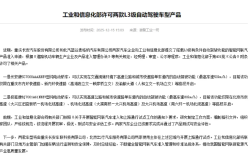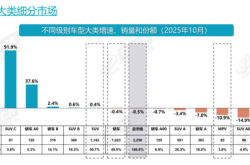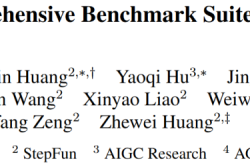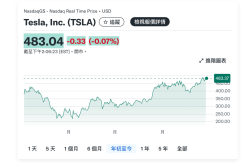China Mobile Bets on the Future of AI
![]() 08/21 2025
08/21 2025
![]() 479
479

The world's largest telecom operator by user base is shifting its capital expenditures from traditional communications to the arena of AI computing power.
Recently, China Mobile released its interim results report for 2025, reporting an operating revenue of 543.8 billion yuan in the first half of the year, down 0.54% year-on-year. Profit attributable to shareholders reached 84.2 billion yuan, up 5.03% year-on-year, equivalent to an average daily profit of 465 million yuan. The EBITDA (earnings before interest, taxes, depreciation, and amortization) rate increased by 0.9 percentage points year-on-year, maintaining the company's profitability at the forefront among global operators.
Amidst slowing growth in traditional communication services, China Mobile has undergone a significant shift in its capital expenditure direction. In the first half of the year, it completed capital expenditures of 58.4 billion yuan, focusing on computing power infrastructure such as intelligent computing centers and large model research and development. Notably, the self-built intelligent computing scale has reached 33.3 EFLOPS (exaFLOPS, a quadrillion floating-point operations per second).
Improvement in Profit Quality
China Mobile's financial data for the first half of 2025 indicates a consistent enhancement in profit quality. Among the total revenue, main business revenue amounted to 466.989 billion yuan, up 0.7% year-on-year. The company proactively divested inefficient businesses, with sales of products and other businesses generating revenue of 76.78 billion yuan, down 7.7% year-on-year, but with minimal impact on overall profit.
Net profit growth surpassed market expectations, with net profit attributable to shareholders in the first half of the year reaching 84.235 billion yuan, up 5.0% year-on-year. Specifically, net profit for the second quarter was 53.604 billion yuan, marking a substantial increase of 75.0% quarter-on-quarter and 6.0% year-on-year. Profitability indicators continued to improve, with the EBITDA rate reaching 34.2%, up 0.9 percentage points year-on-year, and the net profit rate at 15.5%, up 0.8 percentage points year-on-year.
In terms of revenue structure, digital transformation revenue was impressive, reaching 156.9 billion yuan, up 6.6% year-on-year, accounting for 33.6% of communication service revenue. Revenue from the household, government and enterprise, and emerging market segments accounted for 47.6% of total revenue, up 2.6 percentage points year-on-year, signifying a continuously optimized business structure.
Revenue Structure Optimization
Revenue from the individual market totaled 244.7 billion yuan, with the number of mobile customers reaching 1.005 billion, including 599 million 5G network customers, representing a penetration rate of 59.6%. The mobile ARPU (average revenue per user) was 49.5 yuan. Household market revenue amounted to 75 billion yuan, up 7.4% year-on-year, with the number of household broadband customers reaching 284 million. Among these, the number of gigabit household broadband users reached 109 million, up 19.4% year-on-year, and FTTR (fiber to the room) customers increased by 264% year-on-year. The comprehensive ARPU of household customers reached 44.4 yuan, up 2.3% year-on-year.
Revenue from the government and enterprise market reached 118.2 billion yuan, up 5.6% year-on-year, accounting for 25.3% of main business revenue. The number of government and enterprise customers reached 34.84 million, with mobile cloud revenue at 56.1 billion yuan, up 11.3% year-on-year. 5G vertical industry applications maintained a leading position, with the company accelerating its layout in emerging fields such as the Internet of Vehicles, Video Internet, low-altitude economy, and Digital Internet. It served over 69 million intelligent connected vehicles, with the number of Video Internet connections increasing by 20.9%, and achieved 89.38 million video cloud connections.
Revenue from emerging markets totaled 29.1 billion yuan, up 9.3% year-on-year, including international business revenue of 14 billion yuan, up 18.4% year-on-year; digital content revenue of 14.9 billion yuan, up 3.0% year-on-year; and the scale of industrial chain financial services reached 47.1 billion yuan, up 24.5% year-on-year. Financial technology, equity investment, and other sectors developed synergistically, supporting the continuous optimization of the revenue structure.
Capital Expenditure Shifts to Computing Power
China Mobile's capital expenditure trends have always been an industry benchmark. Among the 58.4 billion yuan of capital expenditures completed in the first half of 2025, the computing power sector emerged as a key investment direction. He Biao, General Manager of China Mobile, clearly stated at the results conference: "In recent years, the company's capital expenditure has centered on the computing power sector. The core of computing power lies in AI. Last year marked our significant year of AI investment, with investments exceeding 10 billion yuan, and this year we will further increase it."
Tangible investments have forged an astonishing computing power landscape. As of the first half of the year, China Mobile's total intelligent computing scale reached 61.3 EFLOPS, with the self-built portion at 33.3 EFLOPS, marking a net increase of 4.1 EFLOPS. This scale ranks second only to a few internet giants in China. In terms of computing power network construction, China Mobile has opened over 2.59 million 5G base stations and established the world's first small-scale 6G test network. Its IDC rack service capacity exceeds 660,000 racks, covering all national hub nodes across the country.
The structural adjustment of capital expenditure underscores China Mobile's strategic transformation. The company's total capital expenditure plan for 2025 is approximately 151.2 billion yuan, of which investment in the computing power sector will reach 37.3 billion yuan, essentially unchanged from 2024. Meanwhile, investment in connectivity will decrease by 15.6 billion yuan to 71.6 billion yuan, with a notable reduction in the scale of new 5G base stations.
Transformation Towards an "AI+" Provider and Operator
China Mobile's AI strategy has advanced from the infrastructure investment stage to the early phase of commercial monetization. Chairman Yang Jie disclosed for the first time at the results conference: "Direct revenue from AI has reached the scale of billions of yuan." This revenue stems from four primary directions: computing power services, model capabilities, data operations, and scenario-based applications.
In terms of technological advancement, China Mobile established the China Mobile Jiutian AI Technology Company in July 2025, integrating the resources of the original "Jiutian" team. Simultaneously, it released the "Jiutian" general basic large model 3.0 version, adopting a trillion-scale MoE architecture and surpassing multiple renowned competitors in performance indicators such as mathematical reasoning and multimodal understanding.
In application deployment, the "Jiutian" general and specialized large model matrix has deployed over 50 industry models, with the customer base for "AI-enabled products" nearing 200 million. The monthly active users of the Lingxi intelligent agent surpassed 60 million. Through the multi-model and intelligent agent aggregation service engine MoMA, the inference speed per million usages increased by 42%. In the government and enterprise market, the number of "AI+DICT" signed projects reached 1,485, empowering new industrialization to delve deeper and solidify further.
AI capabilities have been deeply embedded across various business lines. In the government and enterprise sector, China Mobile is accelerating the transition from "cloud to intelligence." On the consumer side, AI technology is being integrated into smart homes, the Internet of Vehicles, and other scenarios. With over 200 general and vertical industry large models converging in the "Renewed Community" and the establishment of Jiuzhou's integrated computing power intelligent network scheduling capabilities, China Mobile is weaving a vast industrial network encompassing computing power, algorithms, and applications, driving its transformation from a traditional communication service provider to an "AI+" provider, aggregator, and operator.

END








